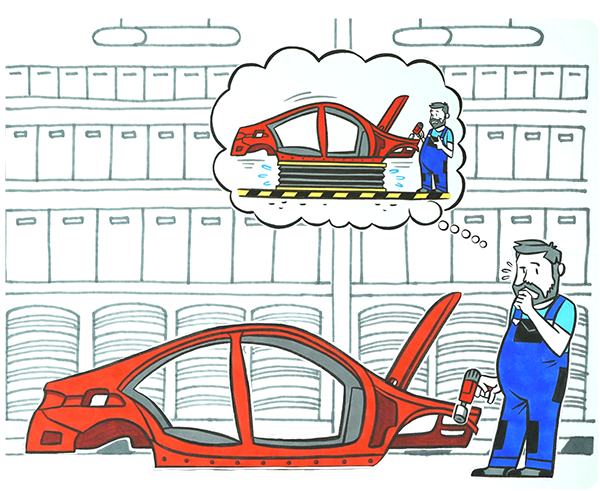Adient, a Tier 1 automotive manufacturer, specializes in the production of automotive seating. The branch in Mladá Boleslav employs 500 people and manufactures seats for the world’s leading automotive companies, including premium and standard models. Adient has more than 30 years of tradition in seat manufacturing.
Kaizen has always been part of Adient’s daily operations. However, the company faced several challenges before implementing the eKaizen platform.
The initial situation
While the core team was using basic digital tools (especially in the areas of design evaluation and approval), many steps were still being handled manually. The main challenges included the administrative burden and error rate associated with filling in and processing paper forms and the lack of data availability and clarity.
Objectives
- Increase efficiency and productivity: speed up kaizen processes, reduce administrative load and free up staff time for higher value-added activities.
- Improve data quality and accuracy: Eliminate data errors, ensure data consistency and enable better analysis and evaluation.
- Increase transparency and collaboration: Make information on kaizen activities available to all relevant staff, promote knowledge sharing and improve communication between teams and departments.
- Improve decision-making: Get clear and up-to-date information on the status of kaizen initiatives, identify trends and issues and make informed decisions.
- Increase employee engagement: Involve employees in the improvement process, increase their motivation and strengthen their sense of accountability for results.
Solution
The implementation of the eKaizen platform was coordinated with key staff to ensure the transition to the new system and its successful implementation into daily operations. In addition to the IT coordinator, this included the plant manager, production managers, manufacturing engineering manager, logistics, HR and EHS managers.
The project included the supply of touch screen kiosks. They were installed in the production halls and employees can easily share designs both from here and from their mobile phones.
Employees were informed about the eKaizen platform via emails, intranet, company meetings and workshops. Emphasis was placed on transparent communication about the objectives, benefits and functioning of the platform.
Main benefits and results
1. Efficiency, reduced administrative load:
-
-
- Elimination of manual form filling
- Fast real-time data collection and analysis
- Efficient monitoring and management of activities thanks to automatically generated reports and reminders
-
2. Improved data quality and accuracy:
-
-
- Fewer errors, uniform data format for easy analysis and comparison
- Improved data availability for all staff involved (managers and authors)
-
3. Visualization and clarity of results:
-
-
- Graphs and dashboards for easier interpretation of data and identification of trends
- Electronic reports can be easily shared and presented to management and other stakeholders
-
4. Environmental aspect – reducing paper consumption
5. Ability to use mobile devices to submit and track suggestions







